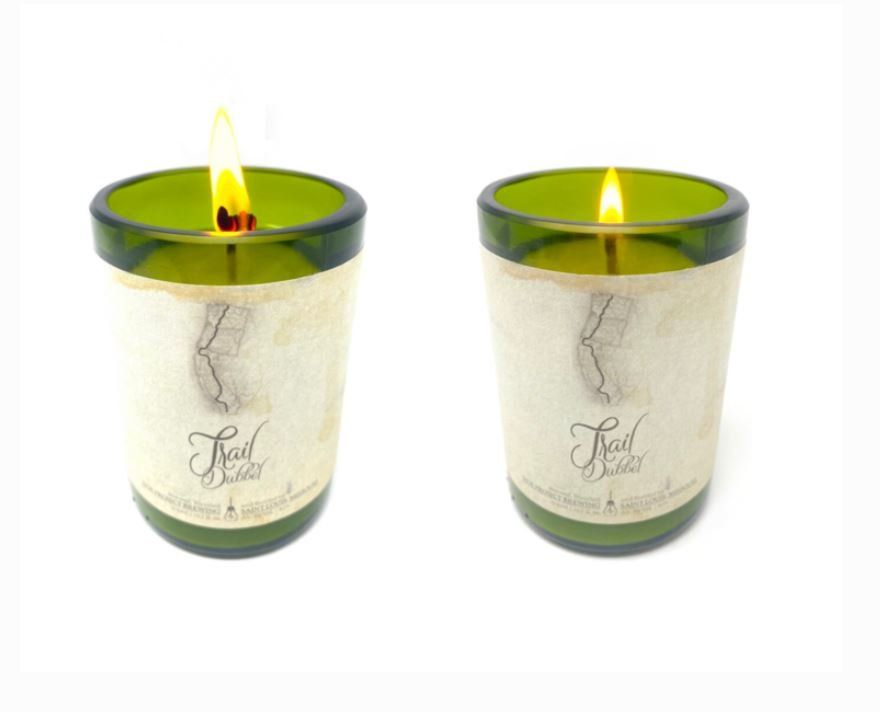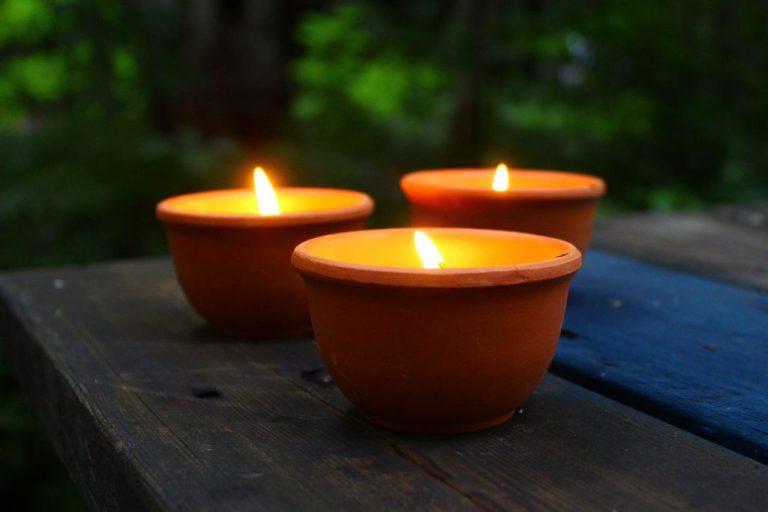Will A Candle Burn Out On Its Own?
The question of whether a candle will burn out on its own is an interesting one that many candle users have likely wondered about. Understanding what factors determine burn time and how to extend candle life can help users get the most out of their candles.
This article will provide an overview of how candles work, the elements that impact burn time, estimates for how long different candle types last, and tips for making candles burn longer. We’ll also discuss safety considerations and when it’s time to replace a candle.
By the end, you’ll have a better sense of when and why a candle might burn out on its own, as well as how to delay a candle from going out.
How Candles Work
Candles are able to burn due to a simple chemical reaction. The candle wax acts as fuel, the wick acts as a catalyst, and the flame provides the ignition source. When a candle is lit, the flame heats up and melts the nearby wax. This liquid wax is then drawn up through the wick via capillary action. As the liquid wax travels up the wick, it vaporizes in the heat of the flame and ignites.
The wax vapor combusts with the oxygen in the air to sustain the flame. This combustion reaction gives off both light and heat energy. The heat melts more wax to keep the fuel supply flowing, creating a self-sustaining burn. The visible flame is the result of the combustion of wax vapors mixing with oxygen in the air (HowStuffWorks).
The wick is a crucial part of this process, as it regulates the flow of liquid wax to the flame. Wicks are made of braided cotton, which provides a sturdy structure with lots of surface area for absorbing liquid wax. This capillary action of the wick draws wax up to fuel the flame. The size and shape of the wick affects variables like burn rate, flame height, and hot wax pool size.
In summary, the melted wax fuels the flame via the wick, while the flame in turn melts more wax. This wax-wick-flame relationship allows candles to burn on their own in a self-sustaining chemical reaction.
Factors That Affect Burn Time
The burn time of a candle depends on several key factors:
Candle size and shape – Larger candles contain more wax and therefore typically last longer. For example, according to Slatkin & Co., a 12 oz candle may burn for 60-80 hours while a 4 oz candle only burns for 15-20 hours (Source). taller candles also tend to burn slower than shorter, wider candles since there is less surface area exposed to oxygen.
Wick size – The width of the wick determines how quickly wax is drawn up to fuel the flame. Larger wicks burn faster, while smaller wicks restrict the burn rate and prolong burn time.
Air currents – Open windows orceiling fans that circulate air will make a candle flame burn faster as increased oxygen is supplied. Burn time decreases in drafty areas.
Temperature – Candles burn faster at higher ambient temperatures since the wax softens and liquefies quicker (Source). Cooler environments slow the rate of burning.
When Will a Candle Go Out?
A candle will go out when either the wax or wick is completely used up. As the candle burns, the wax melts and the wick slowly burns down. Once the wax pool gets low enough that the wick can no longer draw wax up to the flame, the flame will sputter and go out.
Candles may also go out if the flame is blown out by a breeze or draft, if water is poured on the flame to extinguish it, or if the candle tips over spilling the melted wax and smothering the flame. Covering the flame with a snuffer or candle lid will also put the flame out.
It’s important that the wick is able to draw up enough wax to feed the flame. If the melted wax pool gets too low, the wick won’t be able to draw up wax and the flame will die out. Trimming the wick to 1⁄4 inch before lighting can help the candle burn longer before going out.
Wick Trimming
As a candle burns, the flame melts the wax which is then absorbed into the wick. This causes the wick to get longer the more the candle burns. If the wick gets too long it can start to bend over into the melted wax, causing the flame to get uneven and produce more soot.
Trimming the wick helps maintain an even burn and prevents smoking issues. According to Harlem Candle Company, trimming the wick every 4 hours of burn time is recommended. The ideal wick length is around 1⁄4 inch.

Trimming also removes any excess carbon buildup on the tip of the wick, which improves combustion. This helps the candle burn cleaner and more efficiently. As explained by Martha Stewart, approaching the wick from the top and cutting vertically produces the best results.
Proper wick trimming extends the life of candles and provides the best burn performance. It’s an easy candle care task that makes a big difference.
Safety Considerations
When burning candles, it’s important to keep safety in mind to prevent fires. According to the National Fire Protection Association, candles cause an estimated 7,000 house fires each year in the United States.
One of the most important safety tips is to never leave a burning candle unattended. You should always remain in the same room and keep an eye on the candle when it is lit. Leaving the room or falling asleep can allow the candle to burn down completely, increasing the risk of fire.
Proper placement of candles is also critical. Candles should be kept at least 12 inches away from anything that can burn, including curtains, furniture, bedding, paper, flammable decorations, etc. It’s best to place candles on a stable, heat-resistant surface rather than directly on furniture.
Following basic precautions like trimming wicks, using sturdy candle holders, and avoiding drafts can also improve safety. But supervision and distance from flammables are the two most essential factors for preventing fires with candles.
Candle Burn Time Estimates
On average, a candle will burn for approximately 1 hour per ounce of wax. However, the actual burn time can vary quite a bit depending on the size and shape of the candle.
Smaller candles containing 4 ounces of wax or less will provide anywhere from 4-16 hours of burn time. Medium candles around 8-12 ounces typically last for 30-60 hours. Larger pillar or container candles containing over 12 ounces of wax can burn for 80-120 hours.
Votive and tealight candles are designed to provide 4-6 hours of burn time. Birthday candles or decorative candles may only burn for 1-2 hours before going out.
Factors like wick size, wax type, and candle diameter also affect burn times. Larger wicks paired with soft wax will burn faster, while smaller wicks and hard wax blends extend burn times. Tall, skinny pillars burn quicker than short, wide pillars with the same amount of wax. Breezy conditions or drafts will make candles burn faster as well (source).
Properly trimming the wick as the candle burns down will help maintain an ideal melt pool and consistent burn time. Allowing the wick to become too long can cause excess sooting and shorten the life of the candle.
Extending Candle Life
There are several tips for making candles last longer so you can extend their life and get the most out of each candle:
Trim the wick – Long wicks tend to burn faster, so make sure to trim the wick to 1⁄4 inch before lighting. This helps the candle burn slower and more evenly. According to Martha Stewart, trimming the wick before each use can make candles last up to 3 times longer.
Allow the wax to fully liquefy – Let the entire top layer of wax melt before blowing out the candle. This helps prevent tunneling, which makes the candle burn unevenly.
Keep the candle cool – Avoid letting the candle get too hot, which can scorch the wax and decrease burn time. Let the wax fully solidify between burns.
Pick the right spot – Place the candle away from drafts, vents, windows and fans so it doesn’t blow out or burn unevenly.
Keep it burning – Burn the candle for at least 2 hours the first few times to help strengthen the wax pool. Longer initial burns lead to better performance.
Freeze leftover wax – Save any unused candle wax in the freezer so you can melt and reuse it when making new candles.
Sources:
https://www.marthastewart.com/2138430/how-to-make-candles-last-longer
When to Replace a Candle
There are a few telltale signs that indicate it’s time to replace your candle. According to Frostbeard Studio, the most obvious sign is when the wax is fully used up and only the glass remains1. Candles can typically burn for anywhere from 20 to 80 hours depending on size, so keep an eye on the wax level.
Another sign your candle needs replacing is when the wick becomes too short, about 1/4 inch or less. Short wicks can lead to poor wax pooling, tunneling, and smoke2. Trim wicks as needed, but eventually they will become too short to sustain a flame.
Excessive soot buildup on the wick and inside the glass is another indicator your candle is spent. Soot is a byproduct of the candle burning process, but large amounts of it can mean the wick needs changing and the candle is near its end of life.1
Conclusion
Candles burning out on their own is dependent on a number of factors. The wax, wick, and ambient conditions all play a role in determining burn time. As we’ve seen, properly trimming the wick and keeping it centered in the melted wax pool is crucial for maximizing burn time. While no candle will burn forever, following usage and safety guidelines can help extend candle life. Proper wick maintenance ensures an ideal melt pool depth for maximum wax liquefaction. Draft-free spaces prevent premature extinguishing. In summary, with the right conditions and care, candles can provide hours of aromatic ambiance before gracefully burning out on their own.
In conclusion, candles require oxygen, fuel, and heat to remain lit, provided mainly by the wax and wick. Once the wax pool is used up or the wick becomes too short or overwhelmed by melted wax, the chemical reaction will cease and the candle will burn out on its own. With an understanding of how candles work and some simple maintenance, we can better enjoy candles while also burning them safely.



